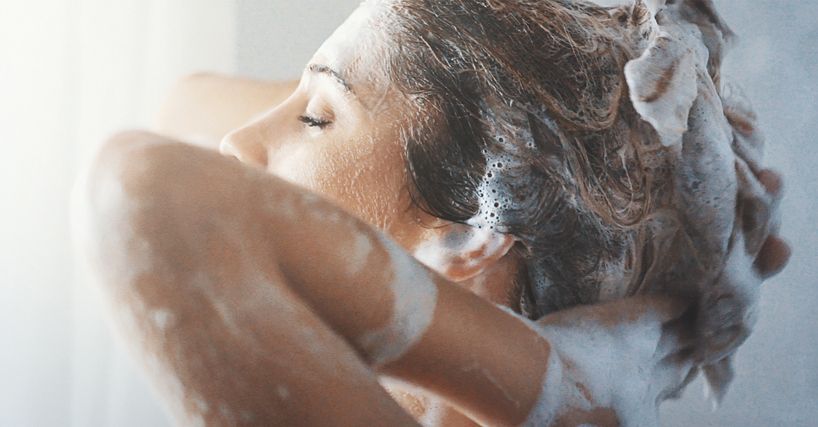
Author: Natalie Ng|Updated: 7 May 2025
If you’re noticing more hair in the shower drain after every hair wash, your shampoo might be doing more harm than good. It might not directly cause hair loss, but some ingredients can trigger problems that lead to excessive shedding. Shampoos with strong sulfates can strip away natural oils your scalp needs. Others may contain preservatives or synthetic fragrances that mess with your scalp health, irritate hair follicles, or even affect how hair grows. A shampoo that doesn’t suit your hair type or scalp condition can also lead to weaker strands and more breakage. Hard water minerals and the wrong pH level can add to the issue too, especially if you wash your hair regularly. There’s a lot going on beneath the surface, and spotting the early signs can help you take action before hair damage becomes harder to reverse. Keep reading to learn how the shampoo you’re using might be linked to hair fall after washing—and what to check if you want to reduce shedding and protect your hair health.

The Role of Harsh Sulfates and Chemical Surfactants
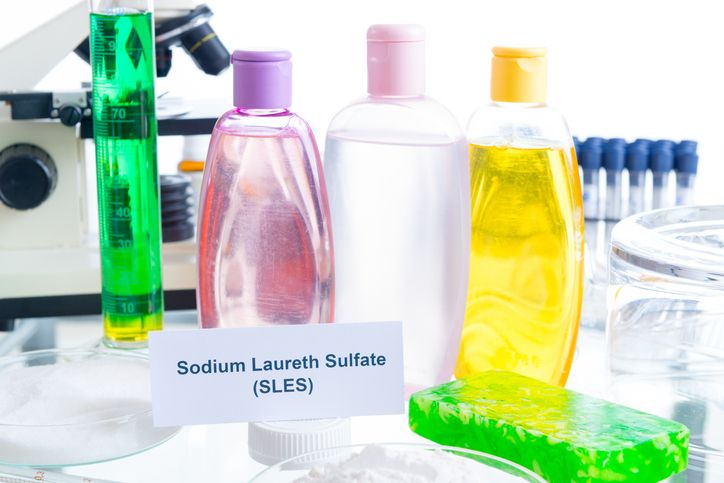
Sulfates Can Weaken Hair Strands
If you’ve noticed more hair fall after washing, your shampoo could be making it worse—especially if it contains harsh sulfates. These are strong detergents that clean your scalp by removing oil, dirt, product buildup, and dead skin cells. But they don’t stop there. They can also strip away the natural oils that protect your scalp and hair strands, which may lead to dryness, hair breakage, and irritation.
Sulfates like sodium lauryl sulfate (SLS) and sodium laureth sulfate (SLES) are commonly used in shampoos to create foam. That lather might feel satisfying, but it can leave dry hair and a tight scalp behind—especially if you wash your hair daily or have a sensitive scalp.
Breakage vs. Root Loss
Sulfates don’t directly pull hair from the root or damage the follicle. Most hair loss during a hair wash is just normal shedding. The average person loses around 50 to 100 strands a day, and many of those get stuck in your hair until they’re rinsed out. What you’re seeing in the shower drain could be completely normal. But if your shampoo is making hair strands dry and weak, it can cause hair breakage, which makes the shedding look worse than it really is.
Choosing Gentler Options
If you want to reduce hair fall and protect hair health, switching to a sulfate-free shampoo might help. These formulas use milder cleansers that clean your scalp gently without stripping away moisture. This can reduce hair damage, especially if you have dry hair, longer hair, or an oily scalp that you wash regularly.
In addition to choosing a gentler shampoo, incorporating dry shampoo into your hair care routine can help manage oily hair between washes. Dry shampoo absorbs excess oil and can prolong the time between washes, but it should not replace regular washing to prevent buildup and maintain scalp health.
Using the right shampoo for your hair type—whether you have oily hair, thick hair, or fine hair—can make a big difference in how your hair reacts after a wash. While sulfate-free products won’t stop normal hair loss, they can help reduce breakage and keep your scalp clean without putting too much pressure on your strands.

Incorrect pH Balance in Your Shampoo
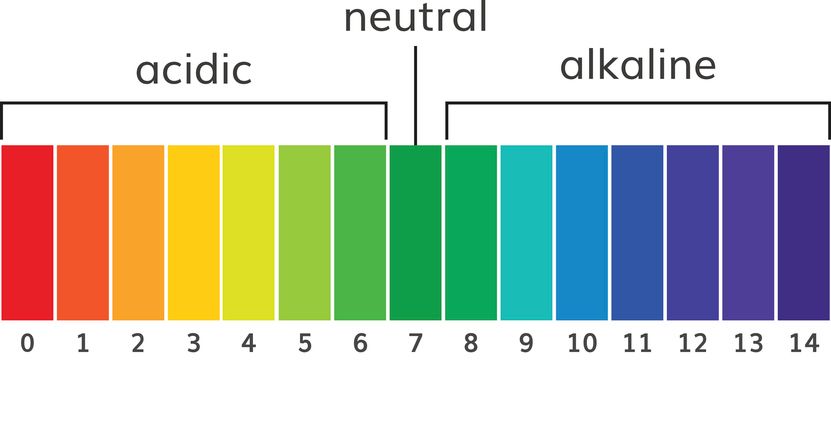
Why pH Balance Matters
Your scalp has a natural pH level between 4.5 and 5.5. This slightly acidic range protects your scalp and helps support hair growth. When your shampoo’s pH falls outside this range, it can disturb your scalp’s balance and damage the outer layer of your hair strands. That can lead to dryness, irritation, and breakage, which often shows up as hair fall after washing.
Shampoos that are too alkaline (too high in pH) can lift your hair’s cuticle layer. This makes it harder for strands to hold on to moisture, which causes frizz and breakage. If the pH is too low, the formula might be too harsh, leading to scalp sensitivity and increased hair shedding.
How pH Affects Hair Health
pH Level Breakdown
• 0–3: Too acidic, can burn the scalp or damage the hair shaft
• 4.5–5.5: Ideal range, supports healthy hair and scalp
• 6–7: Slightly alkaline, may cause mild dryness
• 8–12: Alkaline, leads to frizz, dryness, and breakage
• 13–14: Extremely alkaline, risk of chemical burns
If you regularly wash hair with a shampoo that’s too alkaline or acidic, you might start noticing issues like an oily scalp, frizzy hair, or more strands left in your shower drain. You may also feel rough texture when your hair is wet or experience more breakage during brushing.
Signs Your Shampoo’s pH Is Off
Here are a few warning signs that your shampoo may be disrupting your scalp’s pH:
• Your hair feels squeaky, tight, or very dry after washing
• You notice more scalp irritation, itching, or flaking
• Your strands tangle more easily or look dull
• Your scalp becomes greasy quickly after a wash
• Your hair color fades faster than usual
• Your hair feels fragile and breaks easily during styling
These are all signs that your hair and scalp may be reacting to the wrong pH, leading to increased hair fall during washing.
How to Fix It
Choose a shampoo labeled pH-balanced, ideally between 4.5 and 5.5. This range helps maintain your scalp’s natural environment and protects the structure of your hair strands. If the label doesn’t mention pH, you can test it with a strip or check with the brand directly.
You can also reset your scalp with an apple cider vinegar rinse once a week. Mix one part vinegar with three parts water and use it after shampooing to help bring your scalp back to a healthy pH range.
After switching to a pH-balanced routine, give your hair a couple of weeks to adjust. This can help reduce hair fall, improve scalp health, and keep your strands looking smoother and stronger.
Book Now to Experience
F8 Hair Regrowth Treatment
1 Minute Self-Registration
Date should not be before minimal date

Hidden Allergens and Irritating Ingredients

Common Shampoo Ingredients That Can Trigger Hair Fall
Some shampoos contain ingredients that may cause more harm than good for your scalp and hair. If you’re experiencing hair fall after washing, you might be reacting to hidden allergens or irritating chemicals in your shampoo. These ingredients can cause inflammation, disrupt scalp health, and weaken hair follicles over time. Emotional stress can also trigger hair loss, particularly through conditions like telogen effluvium.
Look out for ingredients like sodium lauryl sulfate, parabens, and synthetic fragrances. These can trigger irritation or allergic reactions that inflame your scalp and interfere with normal hair growth. For some people, even small amounts of these substances are enough to cause excessive hair shedding or hair thinning during a hair wash.
Signs You May Be Reacting to Your Shampoo
If your scalp feels itchy, sensitive, or inflamed after using a shampoo, or if you notice hair falling in the shower, it could be a sign of reacting to your shampoo. These are all signs of scalp irritation, which can weaken your hair follicles and lead to excessive hair loss.
You might also see changes in hair texture—like more dryness, breakage, or rough strands. In some cases, the scalp may become oily as it tries to balance out the dryness caused by harsh ingredients. All of these signs suggest that your shampoo isn’t working with your scalp’s needs.
Ingredients to Avoid
Here are a few common irritants that may be linked to increased hair fall:
• Sodium lauryl sulfate: strips natural oils, causes dryness
• Methylparaben and other parabens: potential hormone disruptors
• Synthetic fragrances: often made from multiple undisclosed chemicals
• Methylisothiazolinone: a preservative that may cause allergic reactions
• Formaldehyde-releasing compounds: may lead to scalp sensitivity over time
These ingredients are often added to improve texture, scent, or shelf life—but they can come at the cost of scalp health and may cause issues like inflammation, dryness, or excessive shedding if you wash your hair regularly with them.
How to Reduce the Risk
Check the ingredient list on your shampoo, especially if you’ve recently noticed changes in how much hair loss you’re experiencing. Switching to a product made without harsh preservatives, fragrances, and sulfates can help reduce hair fall and protect your scalp. Look for shampoos labeled as fragrance-free, paraben-free, and sulfate-free. These tend to be milder and are less likely to cause irritation.
If you suspect an allergy or sensitivity, try doing a patch test before switching products. This simple step can help avoid a reaction and give your scalp the chance to recover, which may reduce shedding and support better hair growth in the long term.

Drying Alcohols and Dehydrating Agents
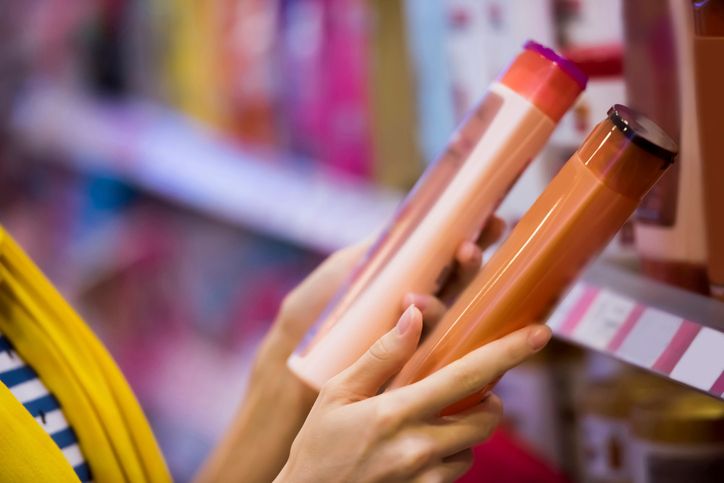
Why Some Alcohols Harm Hair Health
Not all alcohols in shampoos are the same. Some, like cetyl or stearyl alcohol, are fatty alcohols that help moisturize your hair. But others—known as drying alcohols—can strip away moisture and leave your hair brittle. If you’re noticing more hair fall after washing, these harsh ingredients could be weakening your hair strands and damaging your scalp.
To minimize damage from heat styling and drying alcohols, it is important to use a heat protectant as part of your hair care routine.
Drying alcohols like ethanol, isopropyl alcohol, and propanol are often added to help products dry faster or feel lighter. But they also remove your hair’s natural oils, which are essential for protecting both your scalp and the outer layer of your hair strands.
How Drying Alcohols Affect Hair
When drying alcohols are used frequently, they disrupt your scalp’s oil balance and make your hair more fragile. This can cause breakage during a hair wash or while brushing wet hair. Dry strands are also more likely to tangle and snap, which may lead to excessive shedding.
Frequent heat styling can exacerbate the damage caused by drying alcohols, leading to increased hair fall.
Here’s how some common drying agents affect your hair:
• Ethyl alcohol: strips natural oils, increases brittleness
• Isopropyl alcohol: dehydrates scalp and hair shaft
• Propanol: can lead to protein loss and fragile strands
• Benzyl alcohol: may irritate the scalp and weaken follicles
These ingredients can make your hair feel dry and rough, and over time, they may increase how much hair you lose during your regular hair wash routine.
Spotting Problem Ingredients
Drying alcohols are often listed near the top of the ingredients list. That means they’re used in higher amounts. If you use shampoo daily or have dry hair, oily scalp, or thin hair, these ingredients can make the problem worse.
Avoiding drying alcohols helps maintain a healthier moisture balance. This can reduce breakage and lower how much hair fall you notice, especially during washing or styling.
When you’re choosing a shampoo, look for products that rely on gentler ingredients and avoid formulas that leave your hair feeling tight, dry, or frizzy right after washing.
Book Now to Experience
F8 Hair Regrowth Treatment
1 Minute Self-Registration
Date should not be before minimal date

Chemical Preservatives and Their Effects
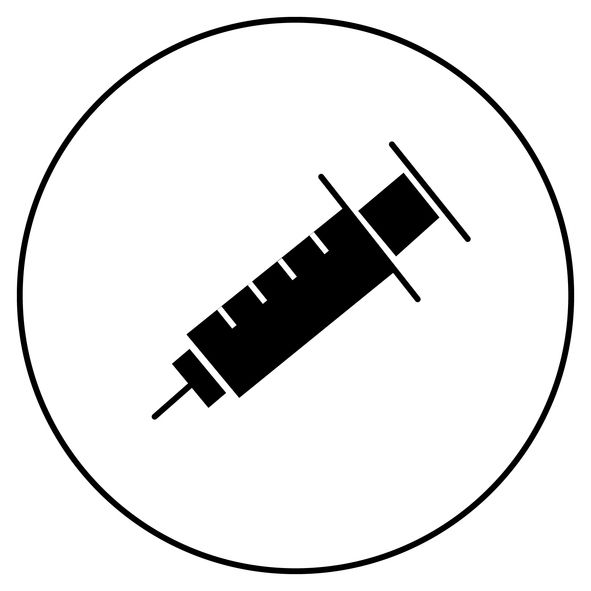
Why Preservatives Are Used
Shampoos need preservatives to stay fresh and safe to use. Without them, bacteria and mold can grow in the bottle, especially since bathrooms are warm and humid. But some of the chemical preservatives used in hair care products can have side effects. If you’re seeing more hair fall after washing, preservatives in your shampoo might be part of the cause.
Certain preservatives may irritate your scalp, trigger allergic reactions, or even affect hormone balance. These effects can weaken hair follicles and lead to more hair shedding, especially if you wash your hair regularly.
Common Preservatives Linked to Hair Fall
Here are some of the most frequently used preservatives that may contribute to scalp problems or hair loss:
• Parabens (like methylparaben, propylparaben): may disrupt hormone balance
• Formaldehyde-releasing agents (such as DMDM hydantoin, quaternium-15): can irritate the scalp
• Benzyl alcohol: may weaken strands and cause dryness
• Methylisothiazolinone (MIT): often triggers allergic reactions and sensitivity
Preservatives can push hair follicles into the telogen phase, leading to increased shedding.
These ingredients can cause scalp inflammation, making your hair more likely to break or shed. You might notice more strands left in your brush or on your hands after a hair wash.
Potential Health Risks of Parabens
Parabens are used to prevent bacterial growth, but research suggests they may act like estrogen in the body. This can interfere with hormone regulation. Some studies have even found parabens in breast tissue, raising concerns about long-term health effects. Beyond hormone issues, they can also cause scalp irritation, redness, and allergic reactions—especially if you’re already dealing with scalp sensitivity or conditions like dandruff.
What You Can Do
If you’re trying to reduce hair fall and improve hair health, check your shampoo’s ingredient list for these common preservatives. You can look for shampoos labeled paraben-free or preservative-free, or choose products that use milder alternatives like:
• Grapefruit seed extract
• Potassium sorbate
• Rosemary oil
• Tea tree oil
These natural options help reduce the risk of irritation while still keeping the product safe to use. Just keep in mind that shampoos with natural preservatives may have a shorter shelf life, so be sure to use them within the recommended period.

Mismatched Formulation for Your Hair Type
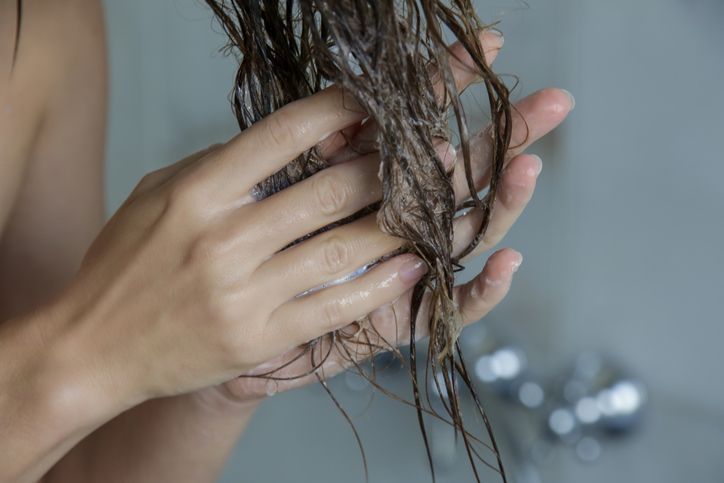
Why Using the Wrong Shampoo Matters
If your shampoo isn’t made for your hair type, it can cause more harm than good. Mismatched formulations can strip away natural oils, leave your scalp dry or oily, and weaken your hair strands. Over time, this may lead to more hair fall after washing.
Each hair type needs different care. For example, thick hair often needs more moisture, while fine or oily hair benefits from lighter, clarifying formulas. If you use the wrong type, you may end up with buildup, breakage, or dryness that contributes to excessive hair loss.
What Happens When Shampoo Doesn’t Match
If you have fine or short hair and use a rich, creamy shampoo meant for thick or dry hair, your strands might feel heavy or greasy. This can clog follicles and cause scalp imbalance. On the other hand, if you have thick, dry hair but use a lightweight shampoo for oily hair, it might not provide enough hydration, leaving your hair brittle and prone to breakage.
Hair grows in cycles, and using the wrong shampoo can disrupt these cycles, leading to increased hair fall.
You may also notice:
• More tangling during your hair wash
• A rough texture when your hair is wet
• Increased shedding when brushing or styling
• Less shine and bounce after washing
• An oily scalp with dry ends
These are all signs that your shampoo may not be right for your specific hair type.
How to Choose the Right Shampoo
To reduce hair fall and keep your scalp healthy, start by identifying your hair type. Think about whether your hair is fine, thick, curly, straight, dry, oily, or color-treated. Then, choose a shampoo that’s designed for those needs.
If you have:
• Dry hair: look for moisturizing or hydrating formulas
• Oily scalp: use a gentle clarifying shampoo
• Thick hair: choose nutrient-rich, smoothing shampoos
• Fine hair: go for lightweight, volumizing options
Using the right shampoo helps support your scalp’s balance and reduces the chance of breakage during washing. Over time, this can improve hair health and lower how much hair you see shedding in the shower.
Book Now to Experience
F8 Hair Regrowth Treatment
1 Minute Self-Registration
Date should not be before minimal date

Build-up Causing Ingredients
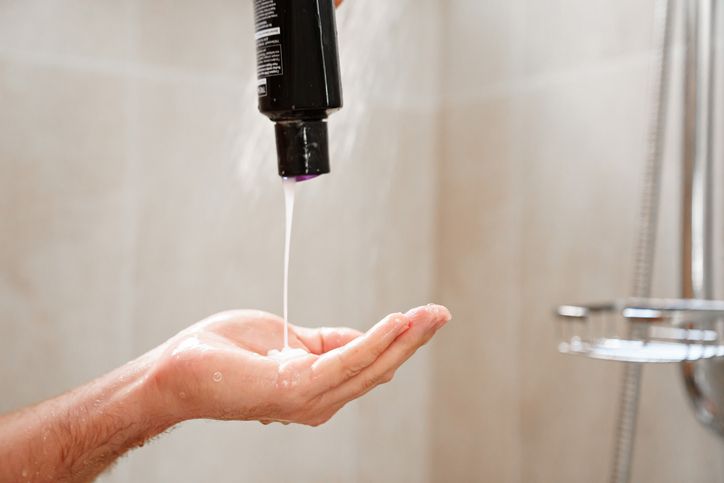
How Product Build-up Affects Hair
Some shampoos and styling products leave behind residue that doesn’t rinse out completely. Over time, this build-up coats your hair strands and scalp, blocking moisture and nutrients. If your hair feels heavy, dull, or hard to manage—and you’re noticing more hair fall after washing—build-up could be part of the problem.
To minimize breakage and manage buildup effectively, use a wide-toothed comb when styling damp fine hair. This helps to maintain the hair's integrity and prevent damage.
Common culprits include silicones, waxes, and leftover sulfate deposits. These substances can create a film on your scalp, clogging hair follicles and interfering with hair growth. This buildup makes hair more prone to breakage during washing and brushing.
Silicone and Wax Residue
Many shampoos and conditioners contain silicones or wax-based ingredients to give hair a smooth, shiny finish. But they can also coat your strands in a layer that prevents moisture from getting in. This leads to dryness, brittleness, and breakage, especially for longer or dry hair types.
Some common ingredients that cause build-up:
• Dimethicone and other silicones
• Paraffin and mineral waxes
• Petroleum-based styling products
Over time, your hair may feel sticky or limp and break more easily when wet or during styling. The scalp can also become oily or irritated, triggering more shedding.
Heavy Sulfate Deposits
Sulfates are added to shampoos to remove oil and dirt. But when combined with hard water, they can leave mineral deposits behind on your hair and scalp. These deposits don’t rinse away easily and can cause your hair to feel rough, dry, or coated after a wash.
While some shedding is normal, heavy sulfate deposits can exacerbate hair loss beyond normal hair shedding.
Signs of buildup from sulfates and other ingredients:
• Hair feels coated or chalky after drying
• Your scalp gets itchy or flakes even after washing
• Hair becomes harder to detangle or brush
• More hair collects in your shower drain
• Your strands break off mid-length
This buildup blocks nutrients from reaching your hair follicles, which may interrupt the natural growth cycle and lead to more hair shedding during your regular hair wash.
How to Prevent and Remove Build-up
Use a clarifying shampoo once every week or two to remove residue from silicones, waxes, and minerals. These shampoos are formulated to deep-clean without leaving new residue behind. Just be sure not to overuse them, as clarifying too often can dry out your scalp and hair.
Also, check product labels and limit the use of styling products with waxes or heavy silicones. Choosing lighter, water-soluble options can help keep your scalp clean and your hair free of buildup, reducing the risk of hair breakage during washing.

Synthetic Fragrances and Artificial Colors

Why These Additives Can Harm Hair
Many shampoos include synthetic fragrances and artificial colors to make the product look and smell more appealing. While they don’t directly cause hair to fall from the root, they can trigger scalp irritation and sensitivity. That irritation can weaken your hair follicles, disrupt your scalp’s balance, and increase hair fall after washing.
These additives are made from complex blends of chemicals, and manufacturers often don’t list each one. This makes it hard to know what you’re reacting to—especially if you have sensitive skin or scalp conditions.
How They Affect Your Scalp and Hair
Synthetic fragrances can cause inflammation, especially if you wash your hair daily or leave shampoo on your scalp for too long. That inflammation can lead to itching, dryness, or redness, which may result in scratching or rubbing that damages hair strands. This inflammation can also lead to increased hair sheds during washing.
Artificial dyes can coat your hair and scalp in a chemical layer. This may interfere with moisture balance and increase friction during washing or brushing, leading to breakage.
Signs these ingredients may be affecting your hair:
• Scalp itching or burning after washing
• Red or flaky patches on the scalp
• Hair that feels dry or coated
• More breakage or hair shedding than usual
• Worsening of existing scalp conditions
You may also find that your hair becomes harder to manage, especially if you have longer hair or an oily scalp that needs regular washing.
What to Look for Instead
If you’re concerned about these effects, choose fragrance-free or naturally scented shampoos that use essential oils like lavender or rosemary. These tend to be gentler on the scalp and less likely to trigger a reaction. Also, look for shampoos labeled dye-free or color-free, especially if you’re already using hair dye or other chemical treatments.
Switching to simpler formulations with fewer additives can reduce the stress on your scalp and help limit hair fall during washing. Over time, this can support healthier hair growth and reduce how much hair you see collecting in the shower.
Book Now to Experience
F8 Hair Regrowth Treatment
1 Minute Self-Registration
Date should not be before minimal date

Over-Clarifying and Stripping Properties
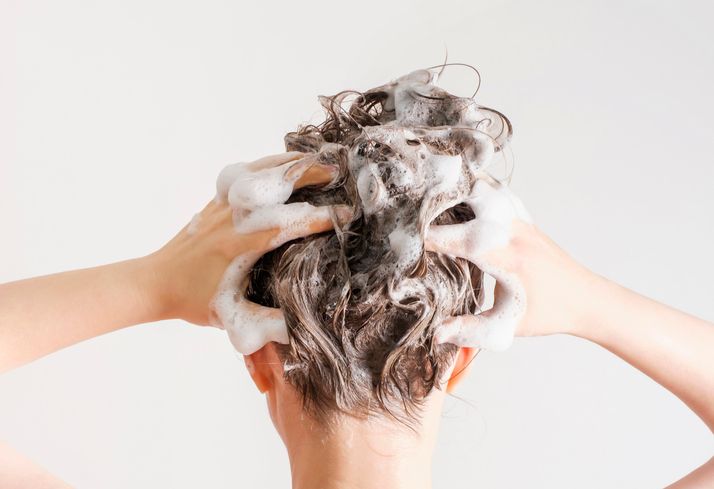
Why Overwashing Can Lead to Hair Fall
Clarifying shampoos are made to remove buildup from the scalp and hair. They help clear out residue from styling products, natural oils, and minerals. But if you use them too often—or use formulas that are too harsh—they can strip away more than just buildup. They also remove the natural oils your scalp needs to stay balanced, which can weaken your hair and cause more hair fall after washing.
Overwashing can trigger telogen effluvium, leading to excessive hair shedding.
Many people with oily scalp or product-heavy routines reach for clarifying shampoos regularly. But using them more than once a week, or applying them to dry or damaged hair, can leave your strands brittle and prone to breakage.
Signs Your Shampoo Is Too Stripping
When a shampoo removes too much oil, your scalp may overcompensate by producing even more oil. That can create a cycle where your scalp feels greasy shortly after washing, leading you to wash again—making the problem worse.
Some signs your shampoo may be too harsh:
• Hair feels dry, stiff, or rough right after washing
• Scalp feels tight, itchy, or sore
• Hair tangles easily and snaps when wet
• You notice more breakage during brushing or styling
• Scalp becomes flaky or irritated
• You feel a squeaky-clean sensation after washing
While that squeaky feeling might seem like a sign of cleanliness, it usually means your shampoo has removed the scalp’s natural barrier—making it easier for your strands to break and harder for your hair to retain moisture.
How to Balance Clarifying
To reduce hair fall and protect your scalp, use clarifying shampoo no more than once every 1–2 weeks—unless you have a lot of buildup or a specific scalp condition that requires it. Follow up with a hydrating conditioner or mask to help restore moisture and support your scalp’s recovery.
For daily washing, choose gentle shampoos that clean without over-stripping. Look for sulfate-free, pH-balanced formulas that work with your hair type and leave your scalp feeling clean but not tight or dry.
By finding the right balance between cleansing and nourishing, you can reduce hair shedding, avoid scalp irritation, and support healthy hair growth.

F8 Hair Regrowth Treatment: A Solution for Hair Fall After Washing
If you’re noticing more hair fall after washing, especially during your regular hair wash routine, the issue might not only be your shampoo—it could also be the condition of your scalp and hair follicles. Weak follicles, poor scalp circulation, and excess sebum can all make your hair more prone to breakage and excessive shedding. That’s where the F8 Hair Regrowth Treatment steps in to support hair growth, improve scalp health, and reduce hair fall from the root.
How F8 Works to Reduce Hair Fall and Strengthen Hair
The F8 Hair Regrowth Treatment is a non-invasive scalp therapy that uses low-energy laser technology to stimulate blood flow, repair damaged capillaries, and activate dormant hair follicles. This supports the anagen phase (active growth phase) of your hair cycle, helping hair follicles function more effectively. It also reduces excess scalp oil and balances moisture levels, creating a healthier environment for hair strands to grow strong and thick.
Here’s how the process works:
1. Laser stimulation: A targeted laser applicator gently directs low-energy beams into the scalp, waking up inactive follicles and improving nutrient delivery through strengthened capillaries.
2. Serum application: A hydrating serum is massaged into the scalp to soothe, moisturize, and help control oil production—reducing scalp issues that may contribute to hair loss.
3. Visible improvement: Over a series of sessions, users report stronger, thicker strands, improved scalp condition, and a noticeable drop in excessive hair shedding.
Why F8 Is Different From Other Hair Loss Solutions
Most topical treatments—like shampoo, hair oil, or conditioners—only work on the surface. Once you stop using them, hair fall often resumes. In contrast, F8 targets the scalp’s inner layers and focuses on restoring normal hair growth cycles by treating the root causes of hair thinning and breakage.
Advantages of F8 Hair Regrowth Treatment:
• Suitable for both men and women with hereditary hair loss, androgenetic alopecia, alopecia areata, or general hair thinning
• Safe for most hair types and scalp conditions, including oily, dry, or sensitive scalps
• No injections, no downtime, and no surgery—just a comfortable, short session
• Encourages long-term growth and reduces dependence on daily topical products
• Helps rebuild a healthy scalp barrier and strengthens hair from the root
Stop Hair Fall After Washing—Start Strengthening Your Hair Today
If your current routine isn’t helping you reduce hair fall after washing, and you’re ready to support lasting change from within, the F8 Hair Regrowth Treatment offers a natural, effective way to repair and boost hair health.
Book F8 today and take the next step toward healthier, fuller hair.
New Beauty's F8 Hair Regrowth TreatmentBook Now to Experience
F8 Hair Regrowth Treatment
1 Minute Self-Registration
Date should not be before minimal date
FAQ
How Often Should I Switch My Shampoo Brand to Prevent Hair Fall?
You don't necessarily need to switch shampoo brands regularly to prevent hair fall, as changing products too frequently can actually disrupt your scalp's balance. Instead, focus on finding a gentle, sulfate-free shampoo that works well with your hair type and stick with it. If you're experiencing persistent hair fall, it's better to consult a dermatologist who can identify the underlying cause and recommend appropriate treatments.
Can Wearing a Shower Cap While Washing Help Reduce Hair Fall?
While a shower cap might seem like a magical solution to save every last strand, it's not particularly effective in reducing hair fall during washing. You're better off focusing on proper hair washing techniques, such as using lukewarm water, avoiding aggressive scrubbing, and gently detangling wet hair. If you're concerned about excessive shedding, you should concentrate on using the right products and maintaining a healthy scalp environment.
Does the Water Temperature While Shampooing Affect Hair Loss?
Water temperature profoundly affects hair health and potential hair loss during shampooing. Hot water can strip your scalp of natural oils, leading to dryness and increased breakage, while also expanding your hair's cuticle layer, making it more vulnerable to damage. You'll want to use lukewarm water to cleanse your hair and finish with cool water, which helps seal the cuticles, reduces frizz, and strengthens your hair strands.
Is It Better to Shampoo at Night or in the Morning?
Your hair and scalp can benefit most from evening cleansing. When you shampoo at night, you'll remove the day's accumulated dirt, sweat, and styling products, allowing your scalp to breathe while you sleep. Additionally, you'll wake up with clean, manageable hair that only needs minimal styling, though if you're prone to bed-head, morning washing might work better for your routine.
Can Certain Hairstyles During Hair Washing Increase Hair Fall?
Certain hairstyles during hair washing can indeed increase hair fall, particularly if you're pulling or twisting your hair too tightly. When your hair is wet, it's more elastic and vulnerable to breakage, so rough handling, such as creating tight topknots or aggressive towel-drying, can damage your strands. You'll want to avoid pulling your wet hair back tightly, using harsh rubber bands, or vigorously scrubbing your scalp while washing.
Recommended Articles
COPYRIGHT© NEW BEAUTY MANAGEMENT LIMITED 2025. ALL RIGHT RESERVED.

